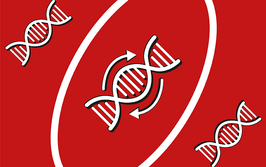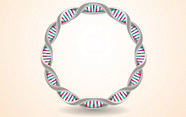From Diagnostics to BiognostiX
Teams in the UK, Finland, Spain, Switzerland and Italy join forces to tackle microfluidic-based assay development
In the length of a Tweet, what is BiognostiX?
Novel microfluidic technology with broad application potential in point-of-use testing for veterinary, agri-food and human diagnostic markets.
How did BiognostiX get started?
The BiognostiX Consortium has been developing the technology under an EU funded FP7 project that aims to change the way diagnostic tests are performed. The consortium is led by FFEI Life Science and also comprises the Institutes of Biotechnology and Manufacturing from the University of Cambridge, Parco Tecnologico Padano SRL, Prionics AG, Proteomika and VTT. Together, we have developed a multiplex microfluidic platform and invented Immuno-Ink to deliver fast, flexible, single-use tests.
What makes BiognostiX unique?
BiognostiX combines the necessary biochemistry, microfluidics and a novel particle technology on a chip composed of a paper-based substrate, which has been mechanically treated to create a microfluidic channel pattern. Reagents are printed using fluid-jet technologies to deliver picoliter quantities of capture complex – the Immuno-Ink – into specific zones in the channels, which enables simultaneous performance of multiple tests per sample.
The simplicity and flexibility of the manufacturing process allows for changes in configuration. For example, the number of microfluidic channels can be varied depending on assay requirements and the residence time of the flowing sample can be adjusted to control interaction time. Once the biochemistry and chip are optimized, they are then fixed for simple, low-cost manufacture. The output of the immunoassays can be quantified using densiometric, colorimetric or fluorometric techniques.
Collaboration seems key in the project…
Well, BiognostiX required several different areas of research, which is why we pulled together partners with various areas of expertise from across Europe. In terms of fiber-substrate engineering, the goal was to develop a cost-effective, disposable fiber-based microfluidic device that enables the controllable movement and processing of fluids while preserving the functionality of printed biomaterials. Our biomaterials engineering research team has conducted pioneering work that has led to the development of specially formulated Immuno-Ink. The fluid-jet manufacturing team has been working to optimize the placement of the biochemical reagents and optical labels without losing biofunctionality. And the BiognostiX Reader has been designed and validated for multiple reaction zones.
What’s next?
The next step is to further develop the technology by undertaking collaborative research projects that integrate some or all of our component technologies into diagnostic assays that are in development.
For more information, visit www.biognostix.com

Rich Whitworth completed his studies in medical biochemistry at the University of Leicester, UK, in 1998. To cut a long story short, he escaped to Tokyo to spend five years working for the largest English language publisher in Japan. "Carving out a career in the megalopolis that is Tokyo changed my outlook forever. When seeing life through such a kaleidoscopic lens, it's hard not to get truly caught up in the moment." On returning to the UK, after a few false starts with grey, corporate publishers, Rich was snapped up by Texere Publishing, where he spearheaded the editorial development of The Analytical Scientist. "I feel honored to be part of the close-knit team that forged The Analytical Scientist – we've created a very fresh and forward-thinking publication." Rich is now also Content Director of Texere Publishing, the company behind The Analytical Scientist.

















